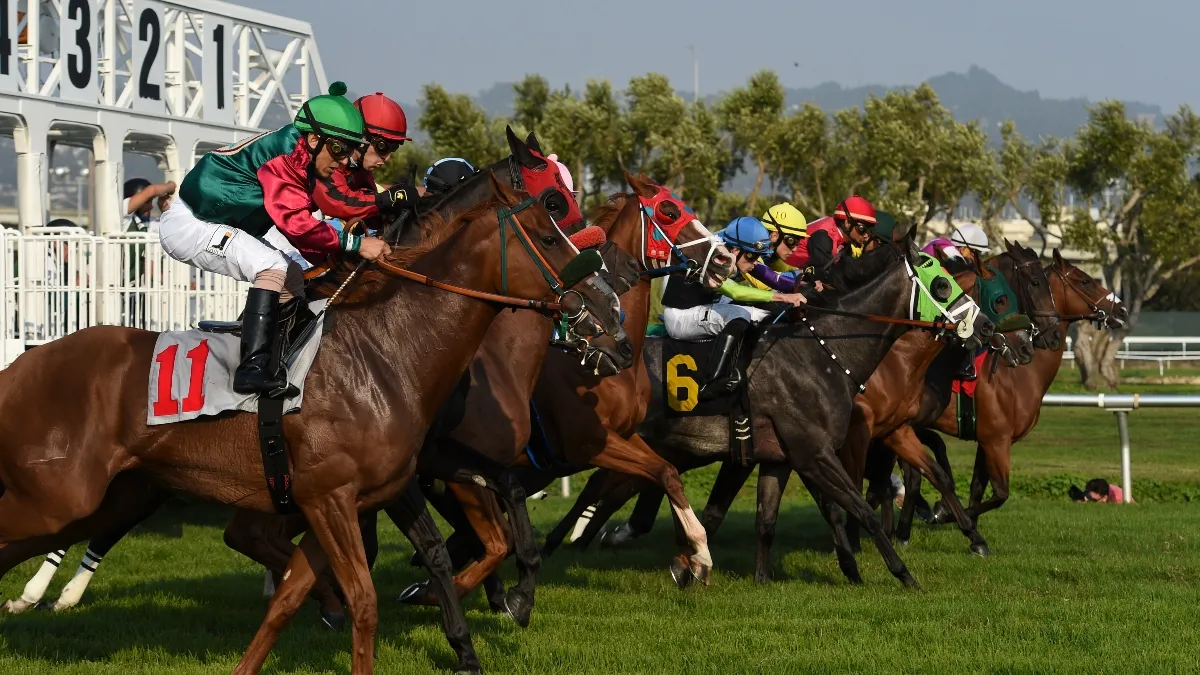Exotics: Best-of/Worst-of

image: Google
Introduction: Horse Racing
In the world of horse racing betting, there is a strategy called “Trifecta Box”.
That is, imagine an eight-horse race. One thinks horses 4, 5, and 6 look best, but can’t quite decide which will win. In this situation, the Trifecta Box offers a solution: It can “box” the horses 4, 5, and 6 to ensure a gain should these three horses finish in 1st, 2nd, and 3rd in any order. However, if any of the three horses failed to finish in the top three, the strategy will be a losing bet. (Investopedia).
In derivatives, a Rainbow Option is similar to the Trifecta Box we just described above, in that it speculates on the best performer or worst performer of all the underlying assets.
In FX derivatives, Best-of/Worst-of options belong to the Rainbow Options: at maturity, the payoff of the Rainbow is some function of Ranked vanilla payoffs (can be CCY1 or CCY2 in the pair).
- On expiry, only the Best-perform (maximum-payoff) or the Worst-perform (minimum payoff) is exercised and like normal vanilla it’s only exercised if ITM
Exotics structures are known to have variations. Here we take the definitions from Bennett and Gil (2012):
Best-of Call: Long a Call on the best performing stock/asset
Best-of Put: Long a Put on the best performing stock/asset
Worst-of Call: Long a Call on the worst stock/asset
Worst-of Put: Long a Put on the worst stock/asset
Product Features
Advantages: (1) cheaper premiums attractive to HFs and corporates; (2) strong directional Spot view on exposures from multiple CCY pairs
Again, because Best-of and Worst-of allow investors to express a view on the out/under-performance or of multiple assets in a particular direction.
Such structures are examples of Dispersion Trading [Bouzoubaa and Osseiran (2010)]
They argue that in Dispersion Trading, payoff of these trades is a function of the distance between the returns on the underlying assets: uncorrelated returns result in a higher dispersion.
Correlation serves as the foundation for Best-of/Worst-of: Long Dispersion = Short Correlation, since a low correlation implies a high dispersion
Higher Correlation makes Worst-of more expensive (which long correlation) and Best-of cheaper (which short correlation). We will examine this relationship in more details later
Pricing and Payoff Formulas:
Case 1: if the common CCY is CCY1 in the pair i: \[ \text{payoff}_i = \frac{S_{T,i} - K}{S_{T,i}} \] Case 2: if the common CCY is CCY2 in the pair i: \[ \text{payoff}_i = \frac{S_{T,i} - K}{K} \] So if the common CCY is CCY1: \[ \newcommand{\MAX}{\text{MAX}} \newcommand{\MIN}{\text{MIN}} \begin{aligned} \text{Payoff}_{\text{Best}} &= \MAX\left(\max\left(\frac{S_{T,1} - K_1}{S_{T,1}}, 0\right), \max\left(\frac{S_{T,2} - K_2}{S_{T,2}}, 0\right), \ldots \right) \\ &= \MAX\left(\frac{S_{T,1} - K_1}{S_{T,1}}, \frac{S_{T,2} - K_2}{S_{T,2}}, \ldots, 0\right) \end{aligned} \]
\[ \newcommand{\MAX}{\text{MAX}} \newcommand{\MIN}{\text{MIN}} \begin{aligned} \text{Payoff}_{\text{Worst}} &= \MIN\left(\max\left(\frac{S_{T,1} - K_1}{S_{T,1}}, 0\right), \max\left(\frac{S_{T,2} - K_2}{S_{T,2}}, 0\right), \ldots \right) \end{aligned} \]
Key relationship in pricing:
- A good rule of thumb to remember is that Best-of tends to be more expensive and Worst-of cheaper: \[ \sum_{i=1}^{n} \text{vanilla option}_i \geq \text{Price}_{\text{Best}} \geq \text{any single vanilla}_j \geq \text{Price}_{\text{Worst}} \]
- Additionally, if we only have two currency pairs, e.g., EUR/USD as pair 1 and GBP/USD as pair 2, both pairs have vanilla Calls, then we can write: \[ \text{Price}_{\text{Best}} + \text{Price}_{\text{Worst}} = \text{vanilla}_{\text{pair1}} + \text{vanilla}_{\text{pair2}} \]
Risk Analysis Example: Best-of/Worst-of Put
Suppose a client comes to the desk, he believes that a recent trend of stronger dollar is going to last for some time, thus bearish on the exchange rates of both EUR/USD and GBP/USD, but doesn’t want to pay higher premiums on two vanilla puts.
Let’s consider a Best-of option between two vanilla Puts: EUR/USD Put and GBP/USD Put
Here, Major Pairs are EUR/USD and GBP/USD, common CCY as CCY2 (USD), Cross-Pair being EUR/GBP
Since this is a Best-of option, we have a Best-of Put: Long the Put on the best performing major pair
Vega Risk: this Best-of Put is Long Vega in the major pairs, as option buyers always like increasing volatility. Also, this Best-of option will have more value, if Spot of the two major pairs move in opposite direction - long dispersion/short correlation. Since short correlation of the major pairs = Long Cross-Vega, thus this Best-of is Long Vega in the Cross Pair (EUR/GBP)
What if it’s structured as Worst-of Put with the same major pairs we just described?
- The Worst-of Put: Long the Put on the worst performing major pair
Vega Risk: this Worst-of Put is still Long Vega in the major pairs, However, this time the Worst-of will have more value, if Spot of the two major pairs move in the same direction - short dispersion/long correlation. Since long correlation of the major pairs = short Cross-Vega, thus this Worst-of is Short Vega in the Cross Pair (EUR/GBP)
Delta Risk for both: because in Spot market, as one CCY pair moves, it impacts the delta in other CCY pair. E.g., in the case of Worst-of of EURUSD and AUDUSD. As EURUSD moves, the Delta of AUDUSD will change. Thus the Delta exposure is more complicated and is multidimensional, requiring careful examination.
Switching Hedge for Best-of/Worst-of:
In the pricing part we mentioned prices of Worst-of tend to be cheaper and the price of Best-of on the same pairs are expensive. To understand why in a more intuitive way, we can consider how the desk hedges Best-of/Worst-of
For a Worst-of: initially buy the least expensive single vanilla among the pairs, then switch it into another pair when the least expensive vanilla changes (it earns money at each switch). At expiry, it will have the worst vanilla payoff as required
For Best-of: initially buy the most expensive single vanilla among the pairs, then switch it into another pair when the most expensive vanilla changes (it costs money at each switch). At expiry, this strategy will have the best vanilla payoff as required – keep updating to the most expensive one to get the best payoff at expiry, by paying premiums for switching